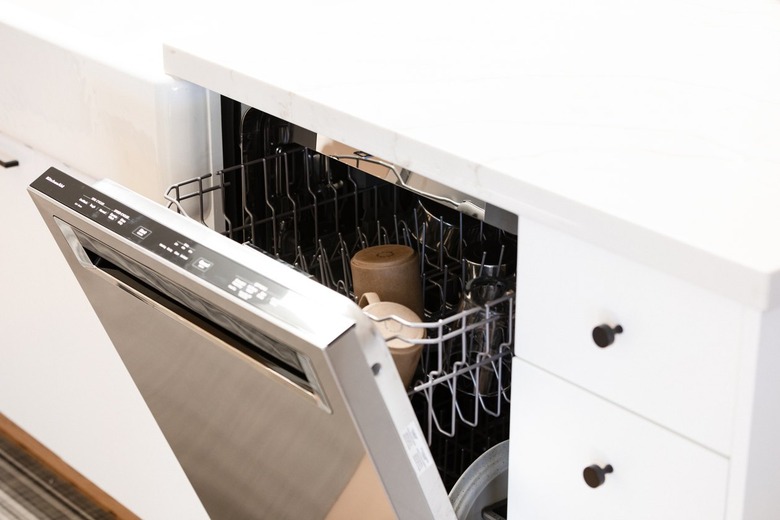Can I Use Vinegar In My Dishwasher To Wash Dishes?
Putting vinegar in the dishwasher is a well-known way to clean and disinfect it, but what about using vinegar as part of the wash or rinse cycle? Vinegar's ability to dissolve the salts in hard water that leave stains on your dishes is legendary, and if you include it in the rinse cycle, you'll be cleaning the inside of the dishwasher while you do the dishes. There's merit to this approach, but there's also a problem.
Vinegar works on hard water stains because it's an acid, and household vinegar is a 5 percent acetic acid solution. Although acetic acid is weak as far as acids go, vinegar has a pH of about 2.5, which isn't much higher than that of sulfuric acid. Sulfuric acid would corrode the rubber seals inside the dishwasher if you ran it through the dishwasher, and vinegar can do the same thing if you overuse it.
The Best Way to Clean a Dishwasher
The Best Way to Clean a Dishwasher
You may think you need to clean the dishwasher with bleach to get rid of musty smells and visible mold, but you don't. You can do the job with vinegar and baking soda, both of which are safe for dishes. The best part of this approach is that baking soda is alkaline and neutralizes the vinegar after it has done its work so it won't damage the dishwasher.
The cleaning procedure involves three steps:
- Remove everything from the dishwasher and pull out the racks and filter. Clean them in the sink to remove ground-in food and replace them.
- Pour a cup of vinegar into a dishwasher-safe vessel, place it on the top rack and run the dishwasher through a hot-water cycle.
- Open the door when the cycle is complete, sprinkle a cup of baking soda over the bottom and run the machine through a short hot-water cycle.
This procedure exposes the inside of the dishwasher to a double dose of cleaning, gets rid of musty odors and scale that may have built up on the door gasket and elsewhere, and leaves no acidic residue.
Using Vinegar as a Rinse Aid
Using Vinegar as a Rinse Aid
If you notice cloudiness or hard water spots on your dishes after washing them with dishwasher detergent, you can get rid of these stains by adding vinegar to the rinse aid dispenser. If the dishwasher doesn't have a rinse dispenser, put a glass of vinegar on the bottom rack of the dishwasher during the rinse cycle. You'll have to stop the dishwasher to do this, but it's more effective than running vinegar through the machine for the entire wash cycle.
To get your dishes clean, you need to scrape them before putting them in the dishwasher, but don't scrape them too meticulously. Dishwasher detergent works best when it mixes with grease and oils on the dishes, and if the dishes don't have enough of them, the detergent bubbles and foams to an extent that can be harmful to the dishwasher. After the detergent has done its work, rinsing with vinegar adds the extra sparkle.
Use Vinegar Sparingly in the Dishwasher
Use Vinegar Sparingly in the Dishwasher
Appliance manufacturers, such as General Electric, don't recommend running vinegar through the rinse cycle very often. If you find that your dishes have water stains after every wash cycle, it's better to install a water softening system in your water supply than it is to keep cleaning your dishes with vinegar. However, any potential damage from a weekly vinegar treatment will be minimal if you use a 5 percent vinegar solution, which is the weakest available.
